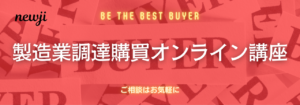- お役立ち記事
- Improving the printability of paper packages and evolving design technology

Improving the printability of paper packages and evolving design technology

目次
Introduction to Paper Packaging
Paper packaging is an integral part of the product presentation and protection process.
From simple food containers to elaborate gift boxes, paper packages play a vital role in preserving the integrity of contents while improving the consumer experience.
As environmental consciousness grows, the importance of sustainable packaging has propelled paper as an eco-friendly alternative to plastic.
However, beyond sustainability, another crucial aspect has emerged—improving the printability of paper packages and evolving design technology.
The Importance of Printability in Packaging
Printability refers to the quality and effectiveness with which an image or text can be printed on a surface.
For paper packaging, printability is critical as it directly affects the visual appeal and communication aspect of the packaging.
Good printability ensures that all printed elements, such as logos, product information, and promotional messages, appear clear, vibrant, and attractive.
In the competitive market, a well-designed package can make a significant difference in attracting consumers’ attention.
Poor print quality not only diminishes the product’s appeal but might also convey a lack of professionalism and attention to detail.
Thus, improving printability is essential for brands aiming to make a lasting impression.
Factors Influencing Printability
Several factors influence the printability of paper packaging, making it essential for designers and printers to address each one for the best results.
Type of Paper
The type of paper used significantly affects print quality.
Characteristics such as surface texture, coating, and thickness play crucial roles.
Glossy papers, for example, might enhance colors but can also cause glare, whereas matte finishes tend to be softer and more subdued.
Inks
The selection of ink is another determinant.
Eco-friendly vegetable-based inks are increasingly popular due to their reduced environmental impact and excellent quality.
The compatibility of ink with the chosen paper type is essential to prevent smudging and bleeding, ensuring sharp and vivid prints.
Printing Technology
Advancements in printing technology have opened up new possibilities for paper packaging.
Digital printing, for example, allows for on-demand printing with greater customization options, while offset printing remains popular for high-volume, high-quality needs.
Choosing the appropriate printing technology depends on factors like budget, design complexity, and required print volume.
Advances in Design Technology
As printability improves, so too must the methods of creating innovative and appealing packaging designs.
Recent advancements in design technology have significantly shifted how designers approach packaging solutions.
Computer-Aided Design (CAD)
CAD software has become an invaluable tool for packaging designers, enabling them to create precise models and simulations.
With CAD, designers can visualize packaging concepts in 3D, make necessary adjustments in real time, and ensure that the finished product will perform as intended.
3D Printing
The advent of 3D printing has revolutionized prototype development.
Designers can now create prototypes quickly and cost-effectively, test various designs with ease, and make adjustments on-the-fly.
This capability enhances creativity while reducing the time and cost associated with traditional prototyping methods.
Augmented Reality (AR)
Augmented reality offers intriguing possibilities for packaging design.
Through AR, consumers can interact with packaging elements in dynamic ways.
Brands are now able to include interactive features, such as QR codes or AR markers, that lead to engaging virtual experiences, enhancing consumer engagement and brand interaction.
Sustainability and Printability
As the world moves towards more sustainable solutions, the printability of paper packaging must align with eco-friendly practices.
This involves sourcing materials responsibly, minimizing waste, and opting for inks and processes that have the least environmental impact.
Recycled Materials
Using recycled paper materials is a trend that continues to grow, helping to conserve resources and reduce landfill waste.
However, maintaining printability on recycled materials can be challenging, requiring careful selection of materials and inks.
Biodegradable Inks
Biodegradable inks are gaining traction due to their reduced environmental footprint.
These inks break down naturally after disposal, minimizing ecological impact while still offering vibrant and clear print results.
Conclusion
Improving the printability of paper packages through evolving design technology is an ongoing process driven by both sustainability goals and consumer preferences.
With innovations in materials, inks, and technology, the industry moves toward creating packaging that is not only functional and visually appealing but also environmentally responsible.
As consumers become more aware of and engaged with packaging, brands must adapt by ensuring their designs resonate aesthetically while aligning with eco-friendly principles.
Ultimately, the success of paper packaging lies in balancing these elements effectively, leading to lasting market success and a healthier planet.
 資料ダウンロード
資料ダウンロード
QCD管理受発注クラウド「newji」は、受発注部門で必要なQCD管理全てを備えた、現場特化型兼クラウド型の今世紀最高の受発注管理システムとなります。
 NEWJI DX
NEWJI DX
製造業に特化したデジタルトランスフォーメーション(DX)の実現を目指す請負開発型のコンサルティングサービスです。AI、iPaaS、および先端の技術を駆使して、製造プロセスの効率化、業務効率化、チームワーク強化、コスト削減、品質向上を実現します。このサービスは、製造業の課題を深く理解し、それに対する最適なデジタルソリューションを提供することで、企業が持続的な成長とイノベーションを達成できるようサポートします。
 製造業ニュース解説
製造業ニュース解説
製造業、主に購買・調達部門にお勤めの方々に向けた情報を配信しております。
新任の方やベテランの方、管理職を対象とした幅広いコンテンツをご用意しております。
 お問い合わせ
お問い合わせ
コストダウンが利益に直結する術だと理解していても、なかなか前に進めることができない状況。そんな時は、newjiのコストダウン自動化機能で大きく利益貢献しよう!
(β版非公開)






